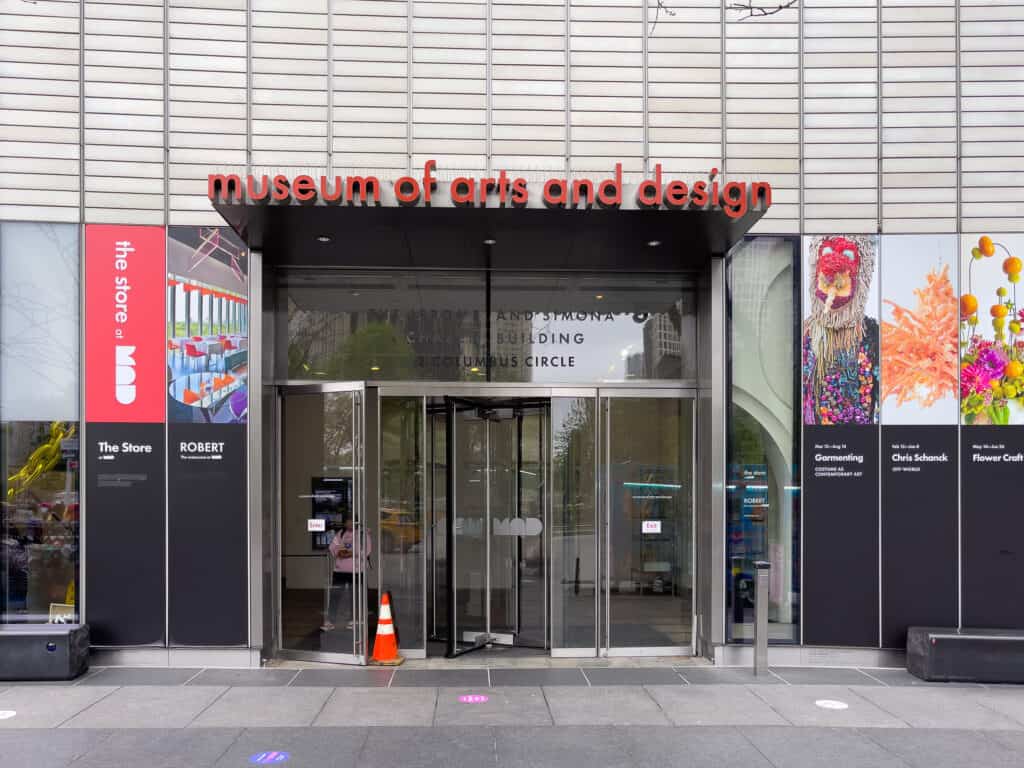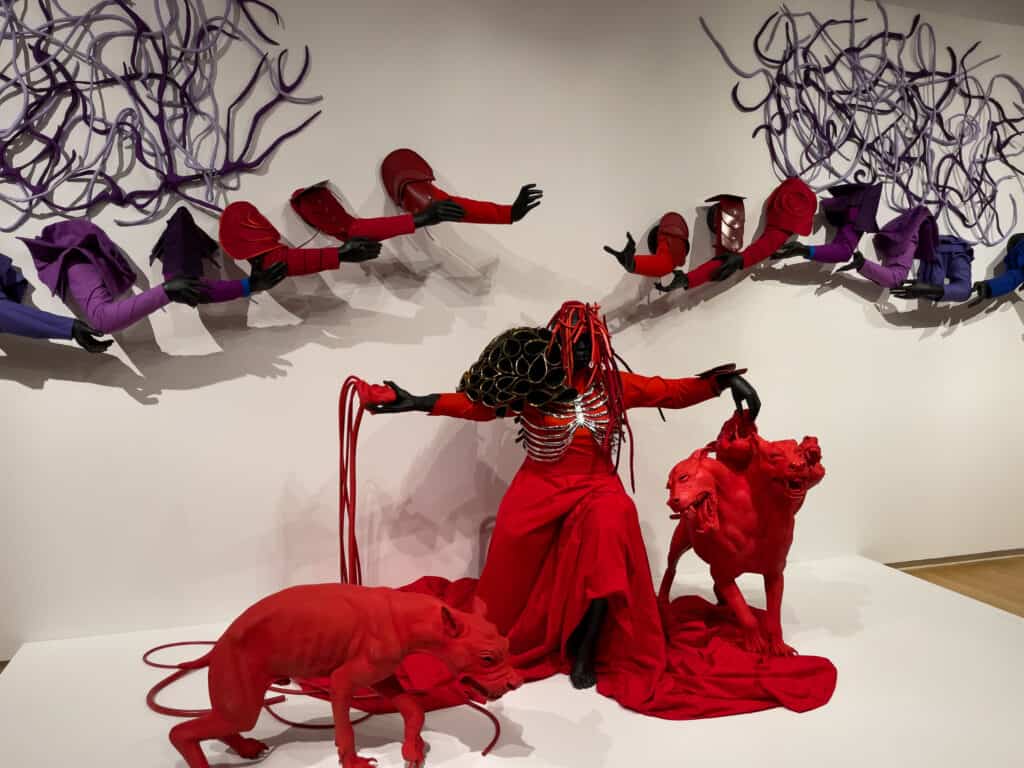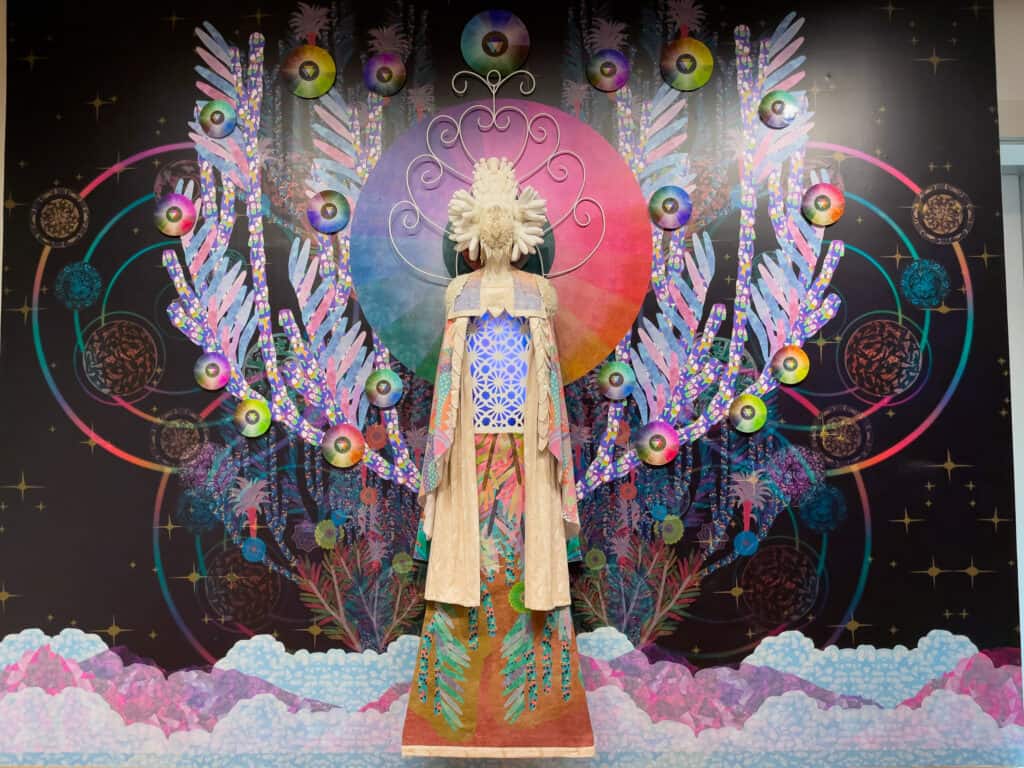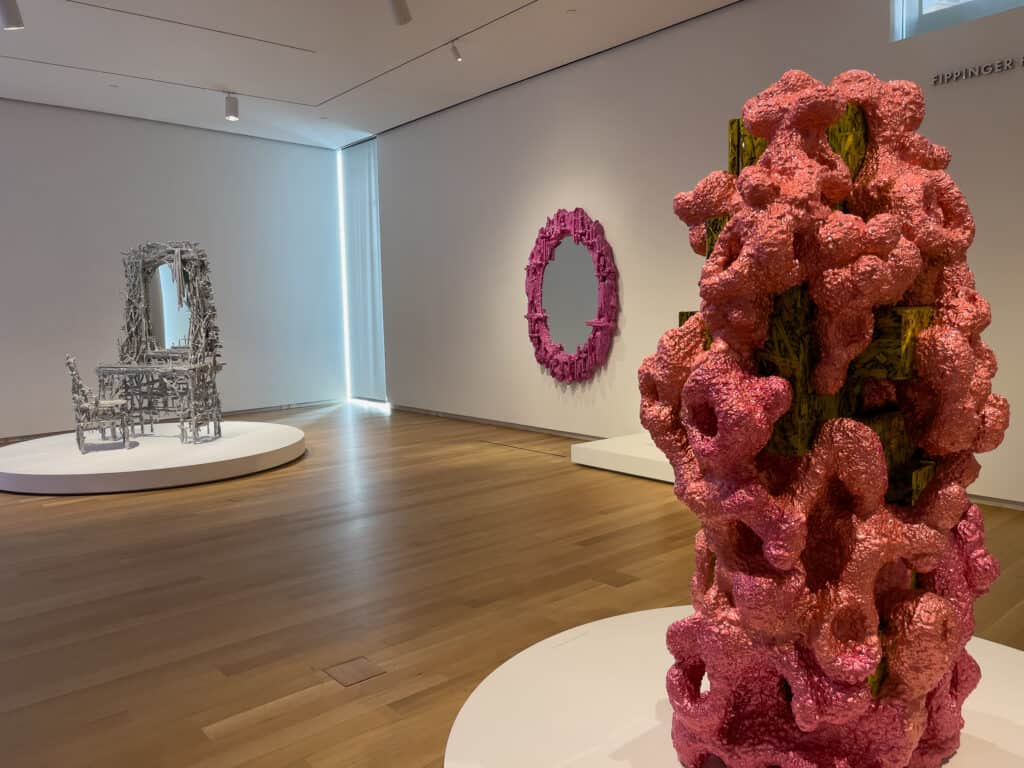The Museum of Arts and Design occupies a unique place in the rich New York City arts scene. MAD, as it’s affectionately known for short, is devoted to bringing together the very best in contemporary design under one roof, meaning its galleries are full of diverse objects drawn from all spheres of what they call “contemporary creative practice.” As a result, on any given visit you’re as likely to encounter exhibits profiling glass-blown flower sculptures as you are pieces of furniture that look like they were built for a spaceship.

Museum of Arts and Design History
The history of the Museum of Arts and Design has been full of twists and turns, but its commitment has never wavered. When it was founded in 1956 by the philanthropist Aileen Osborn Webb, the facility was known as the Museum of Contemporary Crafts and its aim was to promote the modern craftmanship of emerging artists and tradespersons. In 1979, the museum would move to West 53rd Street and rebrand itself as the American Craft Museum.
The twenty-first century has seen the museum undergo its biggest changes yet. In 2002, it adopted its current name, the Museum of Arts and Design. In 2008, MAD moved into its present home at 2 Columbus Circle. This approximately 55,000-square-foot building, originally designed by Edward Durell Stone in the late 1950s, is considered by many to be a New York City architectural landmark. Its recent renovation, which was not without controversy over how best to preserve the structure’s legacy while updating its look, was overseen by Brad Cloepfil.

What’s at the Museum of Arts and Design
The Museum of Arts and Design consists of a combination of special exhibits, temporary installations, and a vibrant permanent collection. MAD’s permanent collection includes thousands of fascinating and diverse objects constructed out of everything from metal, ceramic, and fiber to glass, wood, and synthetic substances.
A hallmark of the MAD experience is its outstanding selection of special exhibits. These shows only appear at the museum for a limited period of time, but they’re carefully chosen to present the finest in contemporary design trends. You never know just what might be showing when you’re in town, but recent exhibitions have highlighted such design genres as artistic garments, otherworldly furniture, narrative jewelry, and more.
MAD has its very own on-site dining establishment, called Robert, that bills itself as a classic modern restaurant. Robert is open for brunch, lunch, and dinner, and its focus is on serving fine, contemporary American fare. The menu can be a bit pricy, but the dining room itself is a work of art, featuring as it does numerous pieces of stylish contemporary design.
The Museum of Arts and Design’s in-house gift shop, known as The Store at MAD is open every day the museum is open. The Store at MAD stocks an expertly curated selection of objects and jewelry fashioned by contemporary artists, as well as an assortment of museum-themed notebooks, magnets, mugs, tote bags, and more. It’s a terrific place to pick up a souvenir of your visit, or purchase a present for a loved one.

Tips for Visiting the Museum of Arts and Design
- The Museum of Arts and Design is included on the money saving New York Pass.
- Every Thursday, admission to MAD is half-price, making it a great day to visit if you have the flexibility in your schedule.
- A great way to experience the museum is by going on a docent-guided exhibition tour. These guided tours are offered Fridays through Sundays at 11:30am and 2:30pm, and on Thursdays at 11:30am and 3:30pm. Best of all, they’re free! Just be in the museum’s lobby five minutes before your scheduled tour time to join up with your docent guide.
- Even if you aren’t that hungry during your visit to MAD, consider stopping in at Robert for a drink or appetizer, as the views available from the restaurant are worth the time alone. Robert looks out over Central Park and Columbus Circle, and it’s a special setting to enjoy a meal.
- Hidden gems abound at the Museum of Arts and Design. If you want to glimpse an obscure-but-memorable installation during your visit, keep a close eye out for Patrick Jacobs’ Dandelion Cluster #3. In the museum’s own words, this hyper-realistic diorama can only be viewed by peering through “a discreet porthole on the building’s exterior at Broadway.”
- With so much to see and do at MAD, you won’t want to miss Judith Schaechter’s Seeing is Believing. This remarkable stained-glass window adorns the museum’s second-floor stairwell. It’s a fabulous spot for pictures, and you won’t want to miss it.

